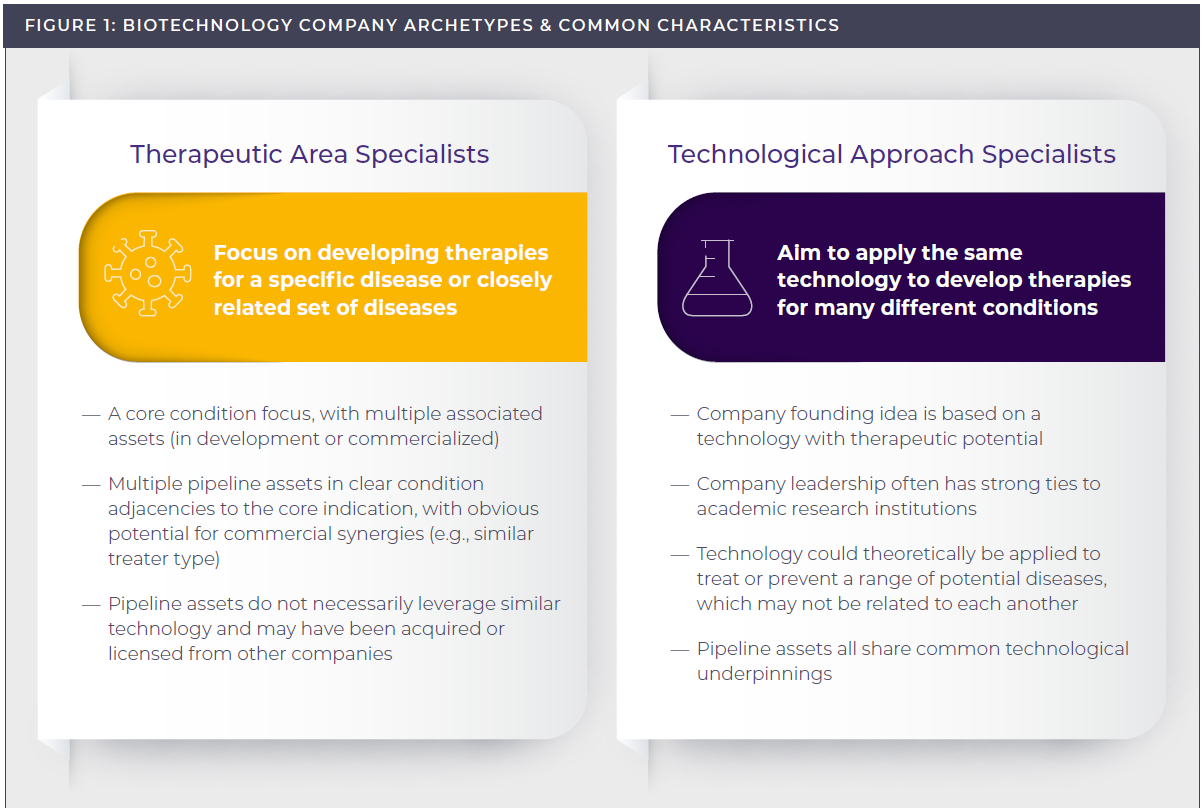Biotech path archetypes from pre-clinical stage to commercial success
Research Contributors: Regan Szalay, Senior Associate Consultant, Avninder Srivastava (Director), Shruti Sharma, Shruti Goyal, Ankit Srivastava
This is a preview of our latest whitepaper. Be sure to download the full piece below.
Putnam has supported commercial and new product planning teams at pharmaceutical and biotech companies for over 30 years. In that time, many companies in the sector have transformed from relatively small pre-clinical or clinical-stage companies to large commercial organizations with several approved assets across global markets. With careful planning, there is an opportunity for biopharma companies to not only be successful with their first commercial launches but to parlay into continued future success as an independent company with a portfolio of assets for multiple indications.
In this piece, we review the paths of five prominent biotech companies, each of which took a different path to establish itself as a successful commercial-stage organization. When looking at this history collectively, two archetypes emerge, distinguished by initial company focus (Figure 1):
- Archetype 1: Therapeutic Area Specialists Those that focus on a key disease or set of closely related diseases.
- Archetype 2: Technological Approach Specialists Those that have a specific technology platform with the potential to leverage to develop therapeutics for a range of disease areas (which may or may not be closely related).
The paths of each of these archetypes offer different advantages but also common potential headwinds that may require careful strategic considerations to overcome. The following sections will 1) define each archetype; 2) provide a historical overview of select examples of companies fitting the archetype; and 3) detail likely strategic considerations unique to that archetype for emerging biotech companies envisioning a similar path to longer-term commercial success. Finally, we will provide an example of a company that does not neatly fit into one of these archetypes but instead adopted a blended approach and will detail approaches to developing a strategic roadmap that capitalizes on the advantages offered by each of the two primary archetypes simultaneously.


Contact us.
To speak with our experts, fill out the form below.
Jump to a slide with the slide dots.
 Mariah Hanley
Mariah Hanley
US vaccines trends and strategies for manufacturers
Discover insights into the evolving US vaccine landscape, trends, and strategic imperatives for successful novel vaccine launches. Download now!
Read more Mariah Hanley
Mariah Hanley
Recent Trends in Rare Diseases
Putnam experts share observations on recent global trends in the rare disease space and recommend strategies to maximize opportunities.
Read more Vikram Gosain
Vikram Gosain
Key trends driving the emergence of targeted radiotherapeutics as an oncology therapeutic pillar
Targeted radiopharmaceuticals are transforming cancer treatment and may become the ultimate focal therapy.
Read more